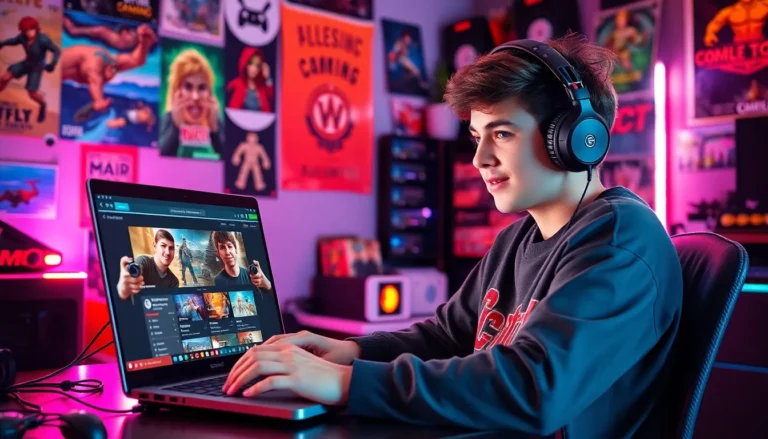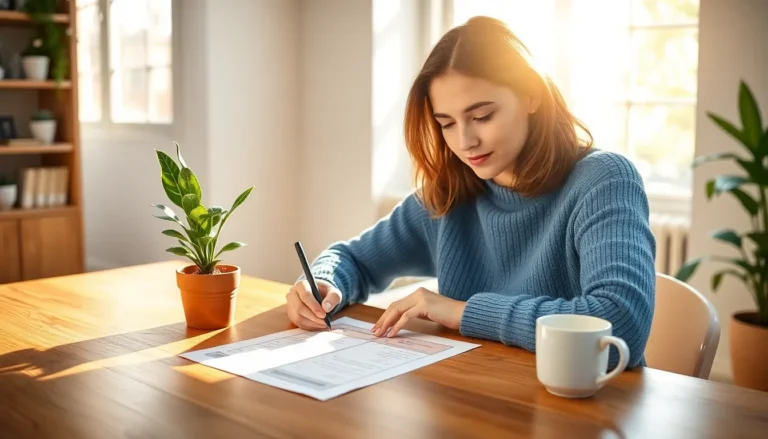Table of Contents
ToggleIn a world full of distractions and endless to-do lists, finding motivation can feel like searching for a unicorn in a haystack. But what if the secret to unlocking that elusive spark lies in a simple pencil and paper? Enter motivation drawing—a delightful blend of creativity and inspiration that transforms doodles into powerful motivators.
Understanding Motivation Drawing
Motivation drawing combines creativity and inspiration to combat distractions and overwhelming tasks. This approach emphasizes turning simple sketches into powerful motivators.
Definition of Motivation Drawing
Motivation drawing refers to the practice of sketching ideas or imagery that stimulates enthusiasm and drive. Artists and creatives use this technique to visualize goals and aspirations. Doodling or recording thoughts on paper can generate a focused mindset, encouraging individuals to tap into their creativity. When engaging in motivation drawing, simple tools like pencils and markers often suffice. Anyone can adopt this practice to enhance their productivity and foster a more enthusiastic approach to their work.
Importance of Motivation in Art
Motivation plays a critical role in the artistic process. It fuels creativity and keeps artists engaged in their projects. When individuals feel inspired, they produce higher-quality work and explore new ideas. Motivation also helps artists overcome creative blocks, driving them to push boundaries and experiment. Cultivating motivation can lead to the formation of unique styles and techniques. In competitive fields, maintaining motivation distinguishes successful artists from the rest. It encourages continuous growth, innovation, and personal expression within the art community.
Techniques for Effective Motivation Drawing


Effective motivation drawing requires the right techniques to harness creativity. Artists can use various strategies to enhance their practice and achieve their goals.
Setting Goals and Intentions
Setting clear goals shapes the motivation drawing process. Establishing specific outcomes, like completing a piece or exploring a style, directs focus and energy. Intentions transform vague ideas into actionable plans. Writers can gain clarity by setting deadlines, defining success metrics, and listing steps toward reaching artistic milestones. Maintaining a visual representation of these goals, such as a mood board or checklist, reinforces commitment. Tracking progress cultivates motivation, maintaining momentum throughout the creative journey.
Finding Inspiration
Finding inspiration fuels motivation drawing. Evaluating various sources, like nature, art, or personal experiences, broadens creative horizons. Engaging with different mediums, such as music or literature, can spark new ideas. Visiting galleries or attending workshops enhances exposure to diverse artistic expressions. Networking with fellow artists promotes collaboration and encourages shared creativity. Keeping a sketchbook handy leads to spontaneous ideation, capturing fleeting thoughts and images. Utilizing online platforms or social media exposes artists to global influences, enriching their personal style and vision.
Tools and Materials for Motivation Drawing
Selecting the right tools enhances the motivation drawing experience. Various supplies and digital tools can inspire creativity and focus.
Recommended Drawing Supplies
Pencils offer versatility for initial sketches, allowing adjustments without permanent marks. Fine pens add precision for outlining and detailing, cultivating clarity in ideas. Markers provide bold colors, making artwork pop and elevating visual appeal. Sketchbooks serve as a personal canvas for spontaneous doodles and brainstorming projects. Colored pencils contribute an array of shades, perfect for shading and adding depth. Art erasers eliminate unwanted marks, promoting a clean workspace and seamless creativity. Each of these supplies plays a unique role in motivating an artist to explore and express their ideas.
Utilizing Digital Tools
Digital tablets allow for endless possibilities in motivation drawing. Software applications provide features for layering and color selection, enhancing the creative process. Styluses deliver tactile control over digital sketches, simulating traditional drawing experiences. Online platforms connect artists globally, fostering collaboration and feedback. Social media channels serve as spaces for sharing work and finding inspiration from others. Using digital tools cultivates a motivating environment where creativity flourishes and connections thrive.
Overcoming Creative Blocks
Creative blocks can hinder artistic expression. Overcoming these obstacles requires effective strategies and a mindset shift.
Strategies to Keep You Motivated
Setting small, achievable goals fosters a sense of accomplishment. Regularly reviewing progress reinforces commitment to the creative journey. Keeping an inspiration board can spark new ideas while surrounding oneself with motivating imagery nurtures enthusiasm. Engaging in daily sketching routines encourages consistency and exploration. Joining artist communities provides interaction and support, fostering motivation through shared experiences.
Embracing Imperfection
Accepting imperfections in art opens doors to creativity. Understanding that mistakes serve as learning opportunities encourages experimentation. Prioritizing process over perfection allows for growth and discovery. Celebrating small wins, such as completing a sketch, builds confidence and fuels passion. Cultivating a playful attitude during the creative process enriches expression and creates enjoyable moments. Recognizing that every artist faces challenges normalizes the creative journey and inspires resilience.
Motivation drawing serves as a powerful tool for artists and creatives seeking to reignite their passion and enhance productivity. By integrating simple techniques and the right materials, individuals can transform their creative process into an inspiring journey. Setting clear goals and embracing spontaneity through sketching can lead to significant breakthroughs and renewed enthusiasm.
Moreover, the practice encourages a mindset shift that values creativity and resilience. As artists explore their unique styles and connect with their surroundings, they cultivate a motivating environment that fosters growth. Ultimately, motivation drawing not only enriches an artist’s work but also nurtures a deeper connection to their creative spirit.







